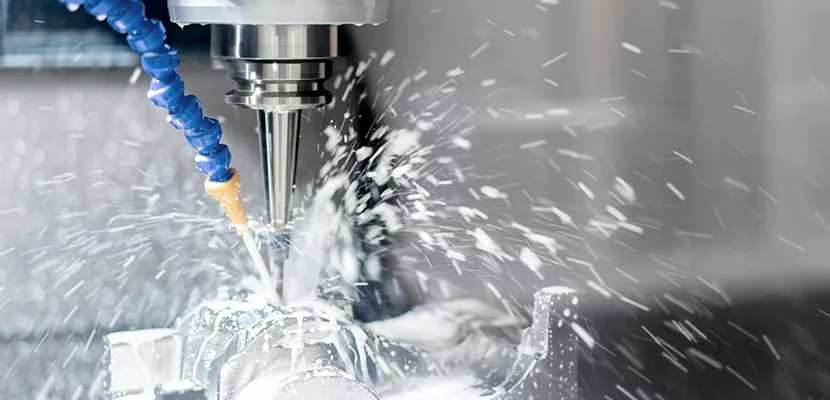Understanding Oil Mist and Oil Smoke: Applications, Health Risks, Safety Hazards, and Effective Solutions
Oil mist and oil smoke in manufacturing facilities are primarily generated by industrial processes that involve the use of cutting fluids, such as machining, grinding, and milling. There are different types of cutting fluids that generate oil mist and smoke, including straight oils, soluble oils, semi-synthetic fluids, water-based fluids (composed of water, with additives for lubrication and rust prevention), and synthetic fluids. These fluids are used to cool, lubricate, and remove metal particles during the machining process. When these fluids come into contact with the hot surface of the workpiece, they vaporize and form an oil mist or smoke.
The difference between oil mist and oil smoke lies in the size of the particles. Oil mist consists of larger particles and is usually visible to the naked eye, while oil smoke consists of smaller particles and may not be visible.
OSHA Guidelines and Compliance
The Occupational Safety and Health Administration (OSHA) has set a permissible exposure limit (PEL) for oil mist at 5 milligrams per cubic meter of air for an 8-hour workday, 40-hour workweek. OSHA also has regulations regarding ventilation, the use of PPE, and other safety measures.
It’s important to note that specific regulations can vary depending on the type of oil being used, the specific processes in place at a facility, and other factors. Therefore, it’s crucial to consult with a safety professional or industrial hygienist to ensure compliance with all relevant regulations.
Applications Associated with Oil Mist
Oil mist is typically generated in manufacturing applications that involve the use of oil for lubrication or cooling. Here are some specific examples:
- Metalworking: In processes such as drilling, milling, grinding, and turning, cooling lubricants are often used to reduce heat and friction. These lubricants can become aerosolized, creating an oil mist.
- Machining: High-speed machining centers often use oil-based coolants, which can create a mist when they come into contact with the hot surface of the machined part.
- Gear Manufacturing: Gear cutting, grinding, and hobbing processes often use oil-based coolants, which can generate oil mist.
- Cold Forming and Forging: These processes often use lubricants to reduce friction and wear, which can generate oil mist.
- Die Casting: Die casting machines often use oil-based lubricants to cool and lubricate the die, which can generate oil mist.
- Spindles and Bearings: High-speed spindles and bearings often use oil-air or oil-mist lubrication systems, which can generate oil mist.
- Heat Treatment: Quenching processes in heat treatment often use oil, which can generate oil mist.
Applications Associated with Oil Smoke
Oil smoke is typically generated in manufacturing processes that involve high temperatures and the use of oil-based lubricants or coolants. Here are some examples:
- Metalworking: Processes such as grinding, turning, milling, and drilling often generate oil smoke when high-speed cutting tools come into contact with oil-based coolants or lubricants. The heat generated by the friction can cause the oil to smoke.
- Heat Treatment: Processes like hardening, tempering, and annealing can generate oil smoke, particularly if oil quenching is used to cool the parts.
- Die Casting: In die casting, molten metal is forced into a mold under high pressure. The high temperatures involved can cause any oil-based lubricants or release agents to smoke.
- Welding: While welding itself doesn’t typically generate oil smoke, if the parts being welded are coated with oil or if oil-based anti-spatter agents are used, oil smoke can be generated.
- Hot Forging: In hot forging processes, the high temperatures can cause oil-based lubricants to smoke.
In all these processes, it’s important to have proper ventilation and filtration systems in place to capture and remove oil mist and smoke from the air. This not only helps to protect the health and safety of workers, but also helps to maintain the quality of the finished products by preventing contamination.
Health Risks and Safety Hazards
Inhalation of oil mist and oil smoke can lead to respiratory problems, skin irritation, and eye problems. Long-term exposure can lead to more serious health problems like occupational asthma and other lung diseases.
Some of the primary safety hazards include:
- Fire: Oil mist is flammable and can ignite if it comes into contact with a heat source or spark, leading to fires or even explosions in extreme cases.
- Slips and Falls: Oil mist can settle on floors and other surfaces, creating a slip hazard.
- Equipment Damage: Over time, oil mist can accumulate on machinery, electronic components, and other equipment, leading to damage and maintenance issues.
To eliminate these risks, it’s essential to use oil mist and oil smoke collection systems. These systems work by drawing in the contaminated air, filtering out the oil particles, and then releasing the cleaned air back into the environment. The collected oil can then be recycled or properly disposed of. Air purification systems for oil mist and oil smoke collection work by using filters to capture the oil particles. The best systems are efficient, reliable, and easy to maintain. They should also be capable of handling the volume of air in the manufacturing facility.

